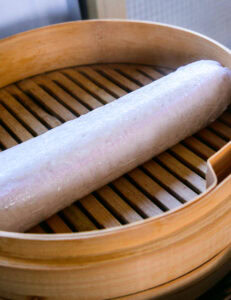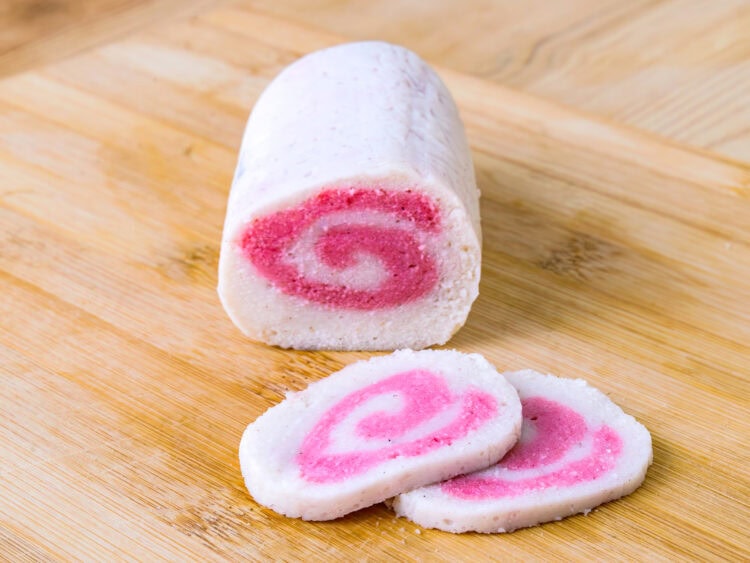A delicious Narutomaki recipe to enhance all your ramen dishes
When you’re enjoying a steaming bowl of Shoyu Ramen, you may have noticed a white cloud-like object with a pink spiral inside floating among the mostly brown ingredients of the dish. If so, you’ve probably seen a Narutomaki, a type of Japanese fish cake.
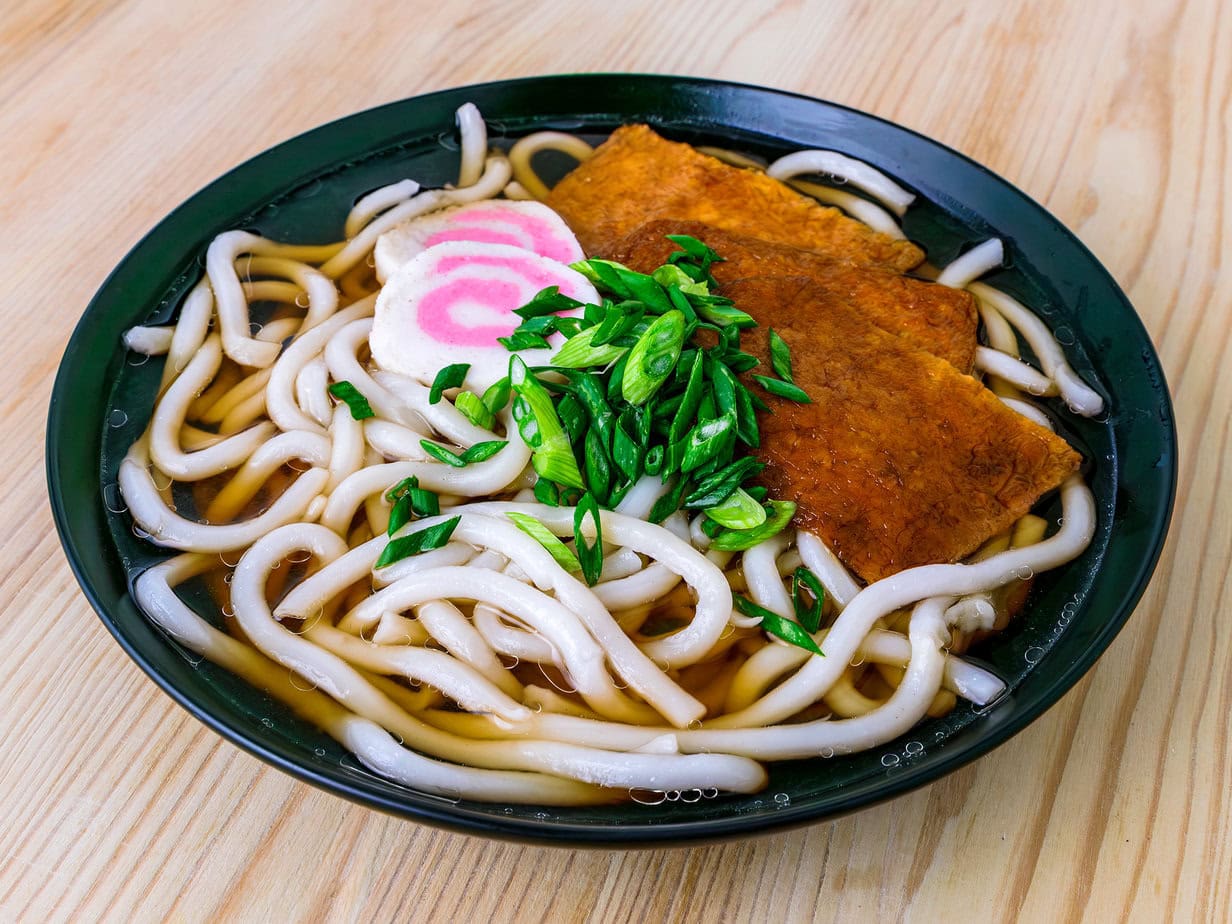
What is Narutomaki?
Simply put, Narutomaki is a white Japanese fish cake with a pink internal spiral. The white part is made of Surimi, a mixture of minced, rinsed fish blended with sugar.
As the fish is well rinsed, it doesn’t have a strong fishy taste. Surimi is a very important industry in Japan, and about 2-3% of global fish catches are used for its production.
The fish used are generally fillets of lean white fish, such as pollock or hake.
Sugar (and mirin) is added to increase shelf life, a practice that dates back to a time when refrigerators didn’t exist yet. The Surimi is then molded into a log shape and steamed.
Red or pink food coloring is added to an inner layer of Surimi to create the characteristic pink spiral effect.
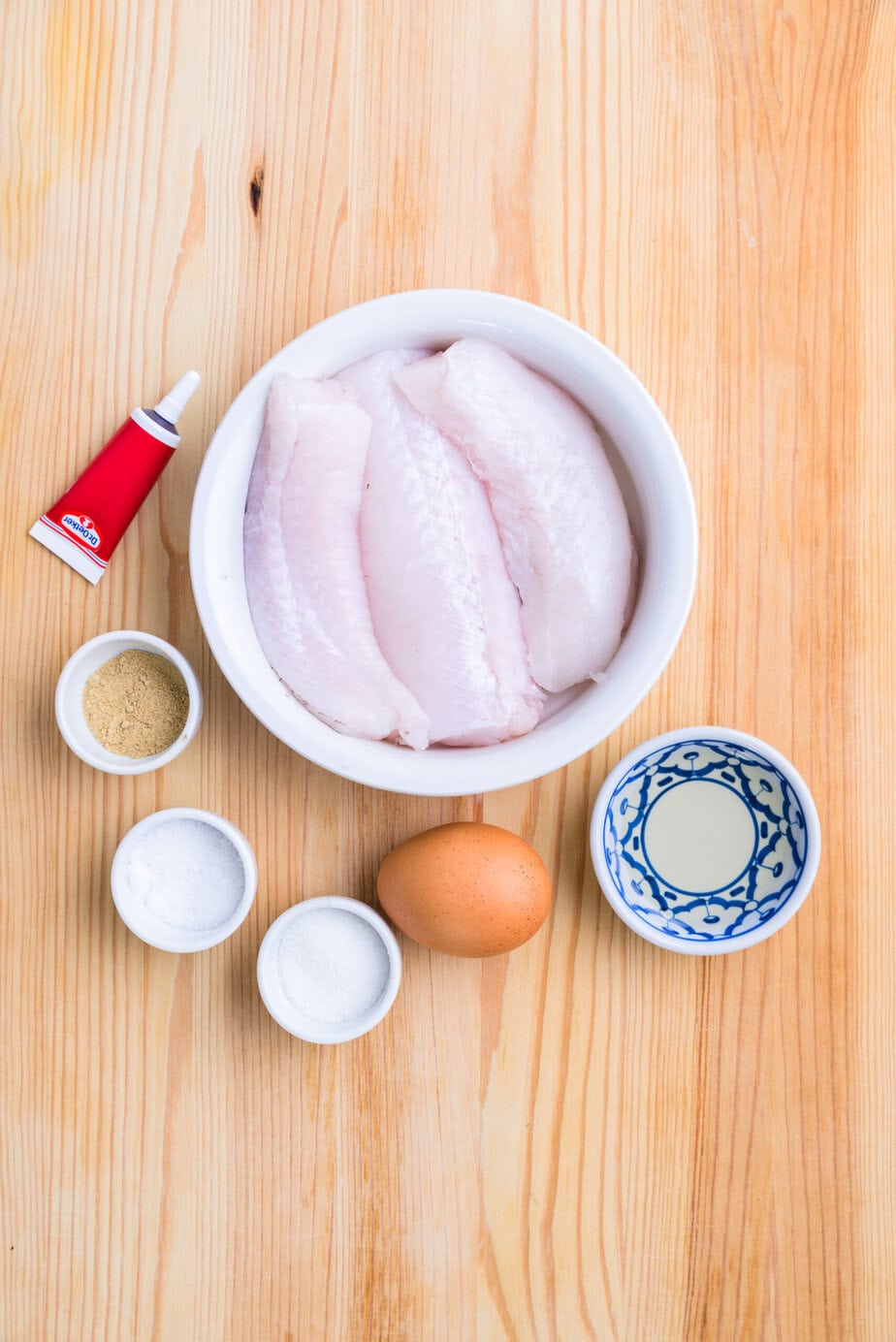
As for the origin of the name, it is often mistakenly attributed to the Japanese anime “Naruto”. In reality, it takes its name from the Naruto Strait in Japan. Located between Awaji Island and Shikoku, this strait is known for its rapid currents and whirlpools, hence the pink spiral design of Narutomaki.
The history of Narutomaki
To understand the origins of Narutomaki, it’s interesting to look at the history of fish paste usage in Japan. Records show that this paste has been consumed since at least the Heian period (794-1192). At that time, it was threaded onto a bamboo stick and roasted over a fire, which could be considered the ancestor of modern Chikuwa.
Narutomaki, on the other hand, appeared later, in the 16th century. According to a book from the Edo period titled “Konnyaku Hyaku chin”, Narutomaki was then consumed wrapped in seaweed or tofu skin.
Although today it is mostly known as a topping for ramen, Narutomaki was originally used as a topping for Soba and Udon noodles. With the rise in popularity of ramen, some Soba chefs became ramen chefs and brought Narutomaki with them to garnish their new dishes.
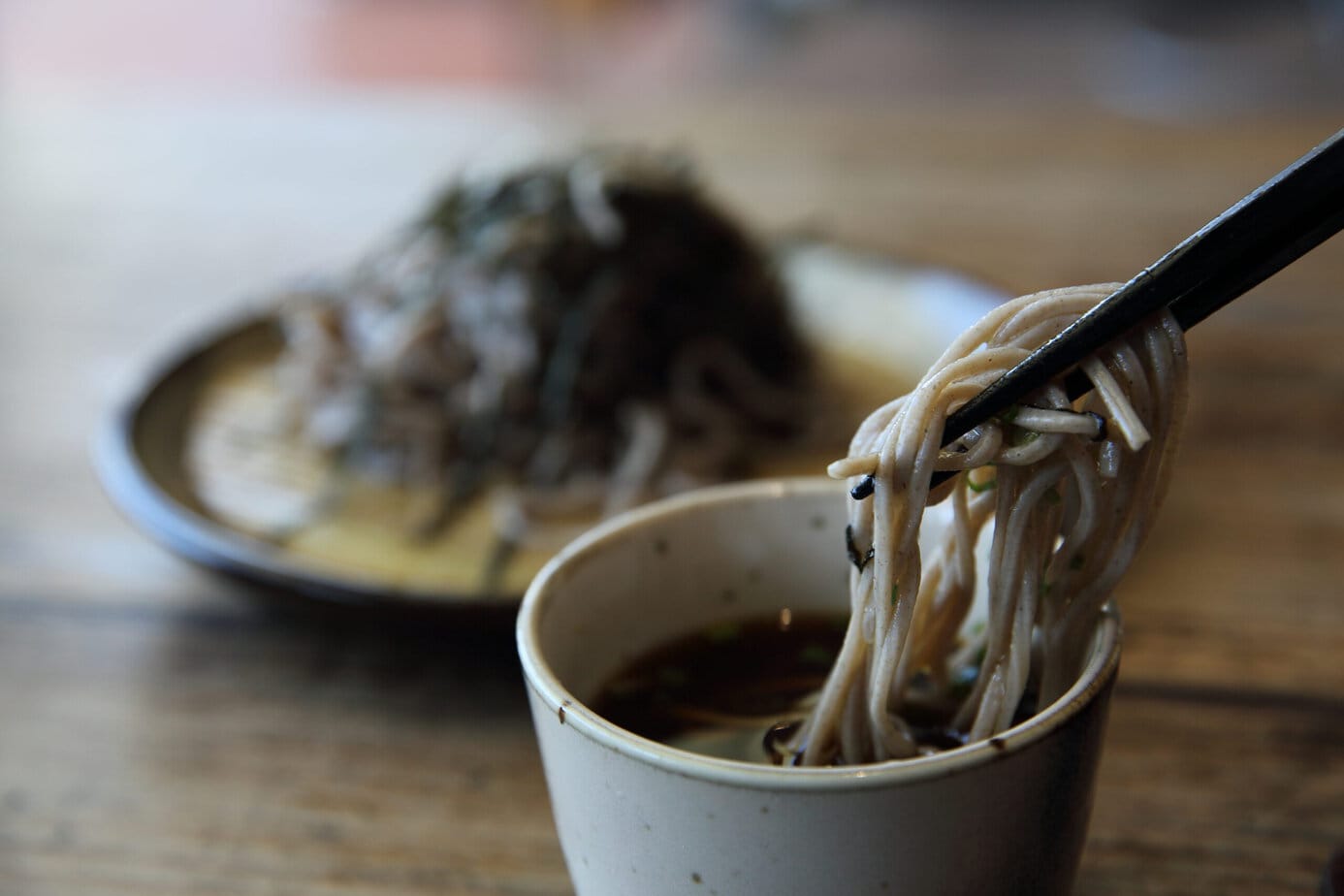
As mentioned earlier, many ingredients in Shoyu Ramen, such as Chashu, bamboo shoots (menma), and broth (Dashi for example) are rather brown.
Narutomaki, with its pink spiral, adds an essential touch of color, which has contributed to its popularity. However, with the current trend towards Tonkotsu ramen (pork bone-based) rather than Shoyu Ramen (soy sauce-based), the popularity of Narutomaki as a ramen topping has begun to decline.
Difference between Narutomaki and kamaboko
To put it simply, all Narutomaki is Kamaboko, but not all Kamaboko is Narutomaki. Kamaboko comes in several forms, the most well-known being pink and white.
The pink variety has a pink ring around a white center, while the white variety is… entirely white. Another type of Kamaboko is Chikuwa, which is tubular and hollow with a grilled exterior, often used in oden or fried in tempura.
There are also imitation crab sticks, made from fish paste flavored with crab liquid, often rolled in Nori seaweed paper to make sushi rolls.
In short, Narutomaki is a specific type of Kamaboko, characterized by its pink-red spiral.
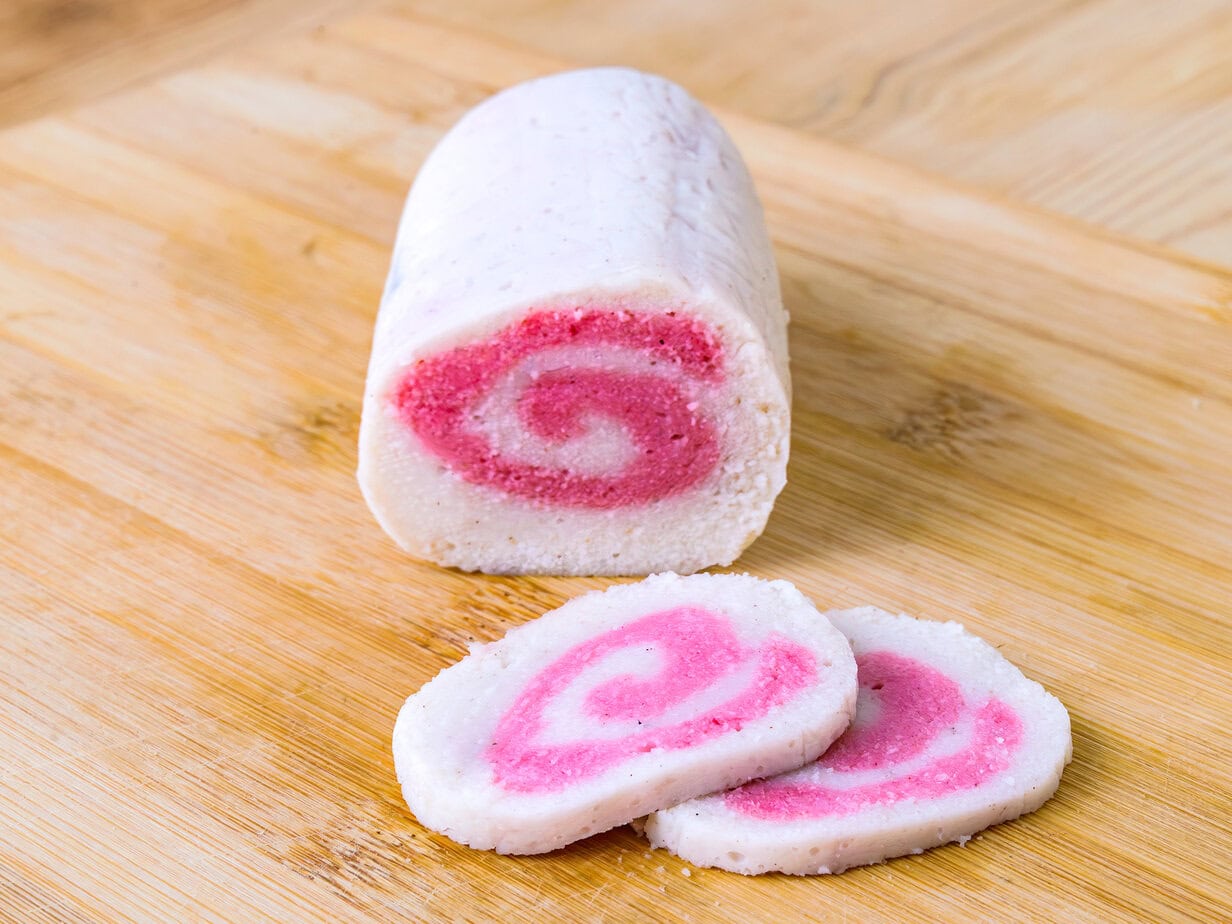
Homemade Narutomaki
Equipment
- steamer basket
- bamboo mat
Ingredients
- 200 grams fish fillets white non-fatty fish or surimi
- 1 teaspoon salt
- 1 teaspoon pepper
- 1 egg white
- 1 teaspoon of sugar
- 1 teaspoon of mirin
- Pink food coloring
Instructions
- Fill a large pot with several centimeters of water and bring to a boil. Place a steamer basket over the pot.
- If you are preparing the Surimi yourself, prepare the fish. Remove the skin from the fish fillets as well as any fat and bones. Carefully wash the fish under cold running water using a colander and press with paper towels to remove excess water.200 grams fish fillets

- Coarsely chop the fish
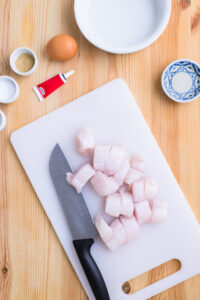
- Put in a food processor bowl. If using pre-made Surimi, simply add it to the food processor bowl. Add the egg white, salt, pepper, sugar, and mirin and mix until a smooth paste is formed.1 teaspoon salt, 1 teaspoon pepper, 1 egg white, 1 teaspoon of sugar, 1 teaspoon of mirin
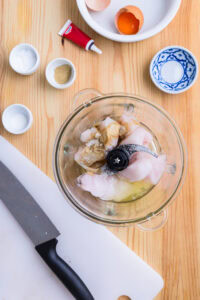
- Transfer half of the paste to a small bowl. Mix with the pink food coloring, one drop at a time, until the mixture is bright pink.Pink food coloring
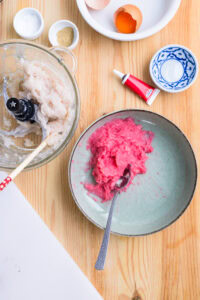
- Place plastic wrap on a work surface and, using a spatula, spread the white half (to which no coloring is added) on the plastic wrap in a rectangle.
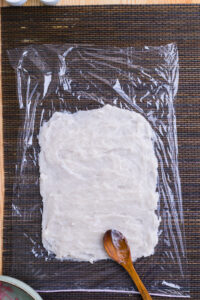
- Spread the pink paste on top of the white paste, leaving a small border along the long edges of the white rectangle.
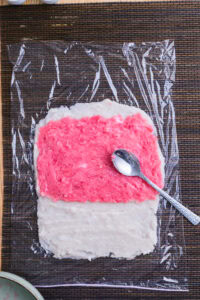
- Roll the fish paste into a cylinder using a bamboo mat.
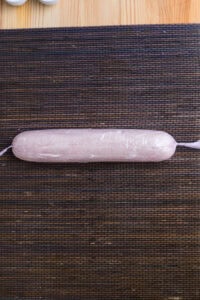
- Transfer to the steamer basket and steam for 15 minutes.
